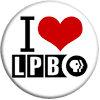CEO Beth Courtney (1985–) Motto It's than television | First air date September 6, 1975 Founded 1975 | |
 | ||
Slogan It's more than television. Owner Louisiana Educational Television Authority Profiles | ||
Louisiana Public Broadcasting (LPB) is a state network of PBS member stations serving the state of Louisiana. The stations are operated by the Louisiana Educational Television Authority. The network serves most of the state outside of Greater New Orleans: that market's PBS member station, WYES-TV is the only PBS station in Louisiana which is not associated with LPB; a noncommercial independent station in that market, WLAE-TV is 50% owned by LPB and carries some of the state network's programming, primarily news and public affairs (though WLAE also carried select PBS programming until 2013). Louisiana Public Broadcasting's studio facilities and offices are located in Baton Rouge.
Contents
- Louisiana public broadcasting
- History
- Digital channels
- Analog to digital conversion
- Programming
- Hurricane coverage
- References
Louisiana public broadcasting
History
Louisiana became one of the first states in the Deep South with an educational television station licensed to the state when KLSE signed on from Monroe on March 1, 1957. Louisiana State University professor Lucille Woodward had urged Governor Robert Kennon to create an Educational Television Commission as part of the State Department of Education, and KLSE was intended as the first station in a statewide educational television network along the lines of Alabama Educational Television (now Alabama Public Television). However, KLSE signed off the air in 1964. For the next eleven years, the only area of the state with a clear signal from a National Educational Television or PBS station was New Orleans, which was served by WYES-TV. That station had signed on one month after KLSE, but was separately owned and operated.
Woodward continued to urge the Louisiana State Legislature not to drop the idea of educational television service in the state during the 1960s. Finally, in 1971, the recently created Louisiana Educational Television Authority approved the money to build and sign on the stations. On September 6, 1975, WLPB-TV in Baton Rouge debuted as the state's first PBS member station outside of New Orleans. Five more stations launched throughout the state, extending LPB's signal to portions of Arkansas, Mississippi and Texas: KLTM-TV in Monroe signed on in September 1976, followed by KLTS-TV in Shreveport in August 1978, KLPB-TV in Lafayette, KLTL-TV in Lake Charles in May 1981 and finally, KLPA-TV in Alexandria in July 1983.
In 1985, Shreveport native and longtime Baton Rouge resident Beth Courtney was named president and CEO of Louisiana Public Broadcasting, a capacity she remains in to this day. LPB began broadcasting in stereo in 1990. In 2001, LPB launched a cable-only channel, LPB Kids & You, on cable channel 11 in Baton Rouge. The channel, a predecessor to LPB 2, aired children's programming during primetime (atypical for PBS stations, which normally air children's programs only during the daytime hours) and adult and creative programs during the daytime hours. When PBS U and PBS Kids ceased operations in 2005, the channel became LPB Plus and expanded its cable coverage to Lafayette. In 2008, the service changed its name to LPB 2.
Digital channels
LPB multiplexes its stations' digital signals, transmitting three subchannels:
Analog-to-digital conversion
Louisiana Public Broadcasting's stations shut down their analog signals at 7:00 a.m. on June 12, 2009, the official date in which full-power television stations in the United States transitioned from analog to digital broadcasts under federal mandate. The station's digital channel allocations post-transition are as follows:
Programming
Louisiana Public Broadcasting's flagship news program is Louisiana: The State We're In, which debuted in 1976. For nineteen years, political consultant, raconteur, and author Gus Weill hosted the acclaimed "Louisiana Legends" program on the state network. Among the original programs that LPB has produced includes Evangeline, which was broadcast by PBS stations throughout the United States and educational stations in Canada in 2000. One of Justin Wilson's cooking series was also produced by LPB. LPB carries, as well as produces, programs distributed by PBS, American Public Television and other distributors.
In April 2016, LPB announced a content partnership with TFO, a French language public broadcaster owned by the Canadian province of Ontario, under which it will supply fourteen hours per-week of French-language children's programming for airing on LPB2. The partnership is designed to appeal to Louisiana's strong French heritage and French immersion programs.
Hurricane coverage
During coverage of major hurricanes affecting the state (as has happened with Hurricanes Katrina in 2005 and Gustav in 2008), LPB's Baton Rouge facilities are used by New Orleans CBS affiliate WWL-TV (channel 4) as a backup studio to provide additional news coverage from the station inland, and act as the station's main set should WWL-TV be unable to broadcast from its Rampart Street facilities in New Orleans. As part of this agreement, WWL's coverage airs across the entire LPB network to provide a statewide conduit for news and information from a well-established news organization.
